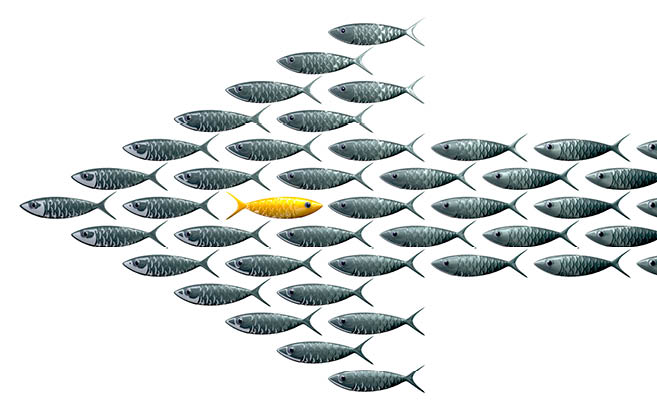Your business is full of human ‘systems’, which actively work to derail any change efforts you seek to make.
A system is any group of interactions between individuals or groups. Most businesses have many overlapping systems that each develop their own rules, structures and processes–making them more and more closed to external influence. The longer that groups and structures are in place, the more likely they are to become closed, inefficient, less flexible and even maladaptive.
In essence, systems develop their own identity and status quo. This acts to provide self-correction, so that if one part of the system (or the environment in which it exists) changes, the response of the system will be to ‘push back’ to re-establish its own identity.
A great example of this occurs when one member of an established team undergoes change. Perhaps you have sent them on a training course, and they come back with new knowledge, ideas and ways to perform better. If they come back into a closed system, it’s likely that their co-workers will find ways to make the new and processes ideas fail. The pressure in the group is to maintain the status quo, so new ideas are actively and subtly rejected.
How often are new ideas, that could make the team better, overlooked or challenged, simply so that the status quo can be maintained?
It is human nature to create closed systems. They offer identity and certainty to its members. Each individual within the system knows how things work, what is safe, what is accepted and what is valued.
When we introduce change programs into closed systems they push back. Often this is the single biggest reason why brilliantly thought out change programs crash and burn. Unless the status quo is destabilised, the chances of the desired change taking hold–and becoming the new norm–are small.
As part of your change planning, determining the status quo that exists in the important groups and systems within your business– and what will block your change effort– is a key first step. Then those systems must be opened up and the status quo of each destabilised so the new norm can be established.
How do you destabilise the status quo?
1. Change processes
If the system has a rigid set of rules and processes, then ensuring these can no longer be followed forces the system to shift to your new, more desired processes. This is particularly relevant where hierarchical approval processes exist. By modifying what is required for something to be approved, the actions of the system are forced to change to accommodate it.
2. Shift the resources
Where the money flows, people and politics follow. Here’s an example of shifting resources to facilitate change: In one business that was struggling to enforce change, we simply cancelled the budgets of one division (that needed to be wound down) and switched them to projects identified as important in the change process. The systemic resistance melted away as people re-aligned themselves around the funding and the power that it brought.
3. Change the relationships
Understand that the status quo is often built on the relationships of the people in the system, and the relationship each system has with each other. Understanding how the configuration of people and systems needs to be arranged to maximise success in the ‘new’ way, allows you to consciously create the new systems that will support and even entrench the new normal. Moving people around to new configurations and into new relationships with each other may be necessary to achieve your change goals.
A great change program requires more than simply destabilising the status quo. However, no change program is ever really successful unless the status quo of its systems is destabilised. Allowing closed systems in a business makes people comfortable, but doesn’t drive innovation, change, or a learning mindset.







